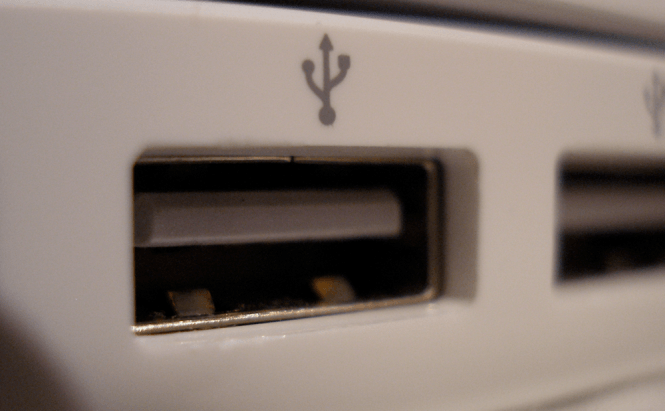 How to fix your PC's USB ports
How to fix your PC's USB ports
USB ports, just like everything in your PC, may occasionally stop working. However, what you might not know about them is that quite often USB ports don't break down for good. In many situations the problem comes from software or firmware (drivers) and not the hardware itself. So, if one of your USB ports has suddenly failed to work properly, here's what you need to do to find out what's wrong with it and maybe fix the problem.
Find out if it's a hardware problem
The first thing that you need to clarify is whether the USB port is physically damaged or there's something else wrong with it.
- The simplest way to examine it is to insert your USB device in the port and see: either it fits in or wiggles (try to wiggle it slowly so that you don't cause the hardware problem yourself).
- If you think that it wiggles, but you're still not sure, try plugging it into a port that you know is functioning; repeat the experiment and if in the second case it fits perfectly, then you most likely have a physical problem. In theory you can fix that too, but you will need to search YouTube for a tutorial on how to go about it and find the right tools or seek professional assistance.
- In case the USB device wiggled in all the ports you've tried it, it may be the device fault.
- If you've determined that the hardware isn't defective, try restarting your PC.
- In case that didn't work, proceed to the next chapter.
Solution 1: Device Manager
This is the fix I used when my USB port kept turning my mouse on and off, and the solution worked like a charm. It requires you to open the Device Manager window (and the simplest way to do that is to launch the Run menu (press the Win + R keys)), then type in devmgmt.msc and press Enter. Additionally, you can get to the Device Manager menu from the Control Panel or you can write devm in your Start Menu and it will be the first result that shows up. Once you've opened the previously mentioned window, find the entry named Universal Serial Bus controllers and click on the arrow next to it.
Now, since it's very difficult to determine which entry corresponds to which port on your PC, you should simply uninstall all of them. Look for every entry that has "USB Host Controller" (or "USB Enhanced Host Controller") in its name, right-click it and press the Uninstall button. One you've taken down all of them, make sure that the USB device is plugged into the port that you want to fix, then restart your PC or right-click the Universal Serial Bus entry and select the Scan for Hardware Changes button. Your computer will automatically reinstall all the USB drivers and that, in turn, might solve your problem (it did in my case).
Solution 2: Windows Registry
Another possible cause for USB ports malfunctioning is an entry in the Windows Registry. To be able to use this fix, you will need to edit your registries, so please proceed with caution and follow my instructions closely as modifying the wrong registry could cause your operating system to stop running completely. The first thing you need to do is to open the Registry Editor window, so once again go to the Run menu (Win + R keys), but now type regedit and press Enter. Then, click on HKEY_LOCAL_MACHINE --> SYSTEM --> CurrentControlSet --> Services, and find the entry named USB (all of these are on the left-side panel).
- If you managed to find it, there should be an entry named DisableSelectiveSuspend in the right-side panel; right-click on it, select the Modify option from the menu that pops up and then change the number in the Value field to 1.
- If you're sure that the USB entry wasn't present, you will need to create it yourself. Click on the previously mentioned Service section, then press Edit button (from the top file menu), click on New and create a new Key named USB. Click on the newly created item, then, in the right-side panel, right-click the empty space, select the New option and create a DWORD Value or DWORD 32-bit Value. Name it DisableSelectiveSuspend. Now, repeat the procedure Value modifying procedure (from above) and everything should be fixed.
Since you now know how to fix your USB ports, you might also want to find out how to fix Windows issues concerning DLL files, read about how to properly maintain your PC or check out the efficient ways to increase the power of your WiFi signal.





